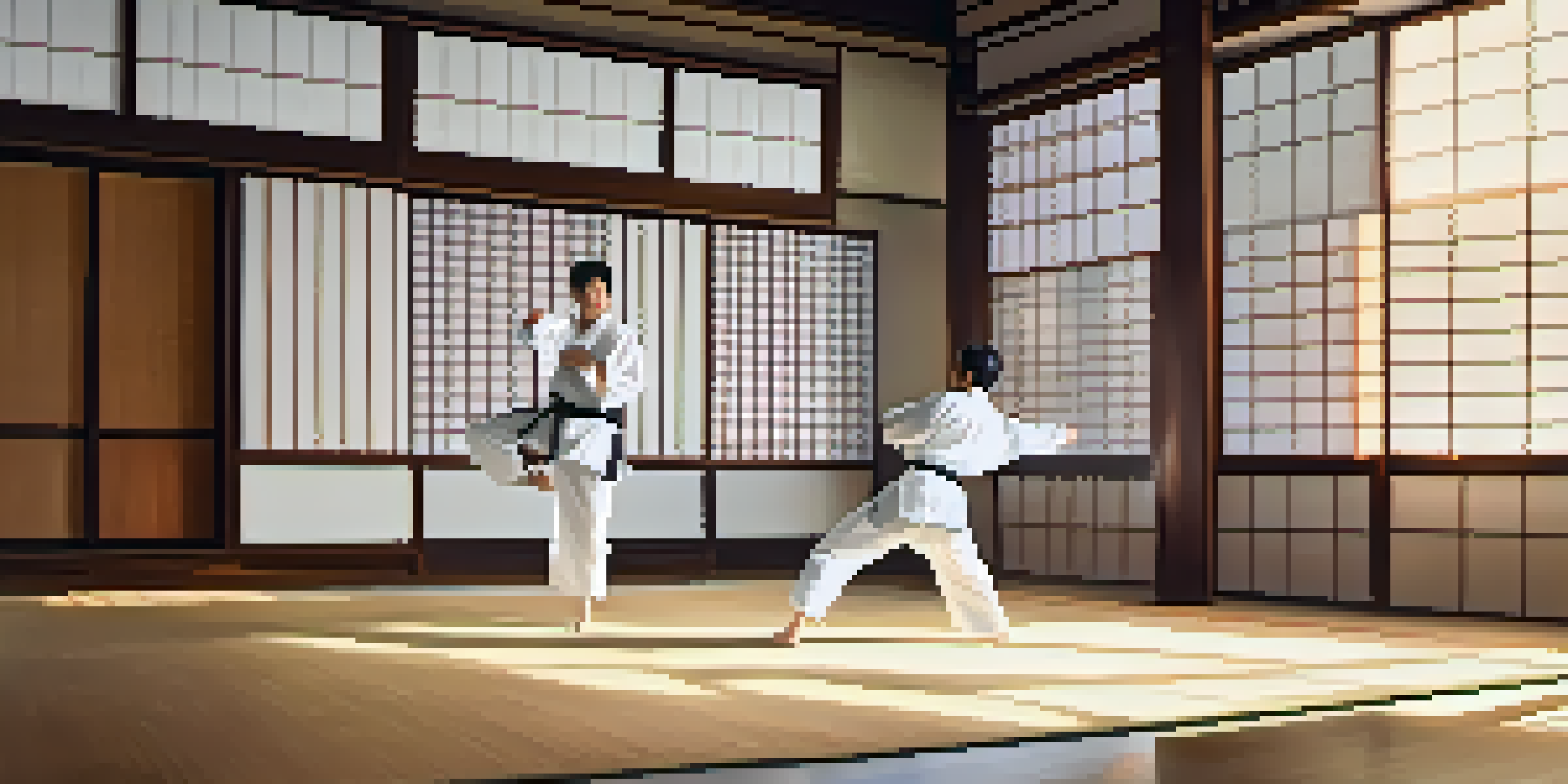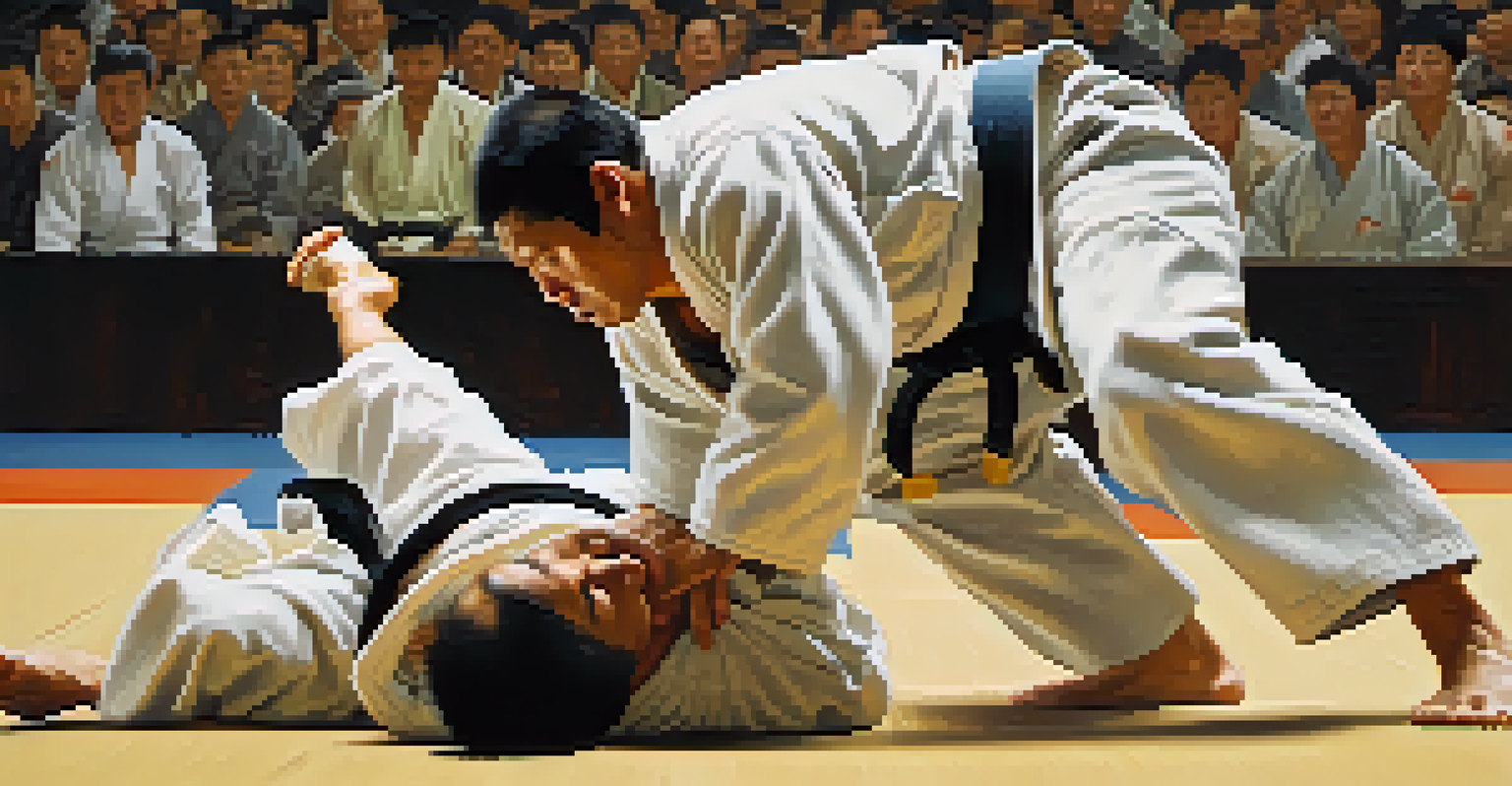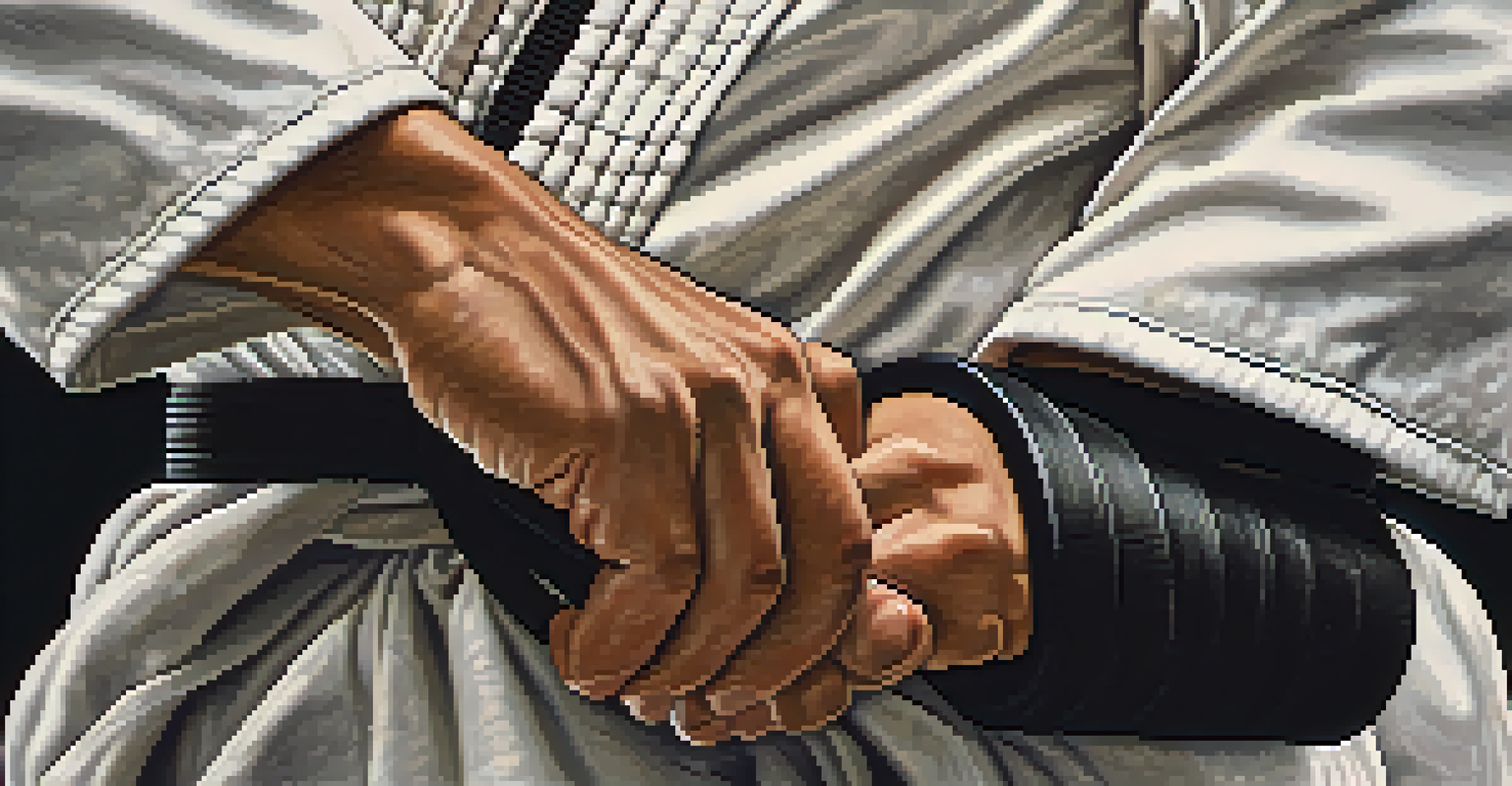Comparing Self Defense Strategies in Karate and Judo

Understanding the Core Principles of Karate and Judo
Karate and Judo, while both martial arts, have distinct philosophies. Karate emphasizes striking techniques, focusing on punches, kicks, and defensive maneuvers. In contrast, Judo is centered around grappling, utilizing throws and holds to subdue an opponent.
The ultimate aim of martial arts is not having to use them.
The essence of Karate can be summed up as 'the way of the empty hand,' which highlights the importance of precision and power in strikes. Judo, meaning 'the gentle way,' teaches practitioners to use an opponent's force against them, making it more about balance and technique than brute strength.
Both arts promote self-discipline and respect, but their approaches to self-defense differ significantly. Understanding these core principles helps in choosing the right path for self-defense training.
Striking vs. Grappling: Key Techniques in Karate and Judo
In Karate, the primary techniques revolve around powerful strikes. Practitioners learn how to effectively deliver punches and kicks from various stances. This striking approach is designed to incapacitate an opponent quickly, often aiming for vulnerable areas.

On the other hand, Judo focuses on grappling techniques, such as throws and joint locks. These techniques are designed to control and immobilize an opponent, often using their weight and movement against them. For instance, a judoka might use a throw to bring an aggressor to the ground.
Karate vs. Judo: Different Techniques
Karate focuses on striking techniques, while Judo emphasizes grappling and using an opponent's force against them.
Both techniques have their contexts in self-defense. Striking can provide a quick escape, while grappling can neutralize a threat in close-quarters situations, showcasing the diversity in self-defense strategies.
Situational Awareness: A Shared Value in Both Arts
One of the most critical aspects of self-defense is situational awareness, and both Karate and Judo strongly emphasize this concept. Practitioners are trained to be aware of their surroundings, recognizing potential threats before they escalate. This proactive approach is crucial in avoiding confrontations.
Karate is a way of life, a means of self-discipline, and a path to self-improvement.
In Karate, practitioners learn to assess their environment while practicing techniques, ensuring they can react appropriately to sudden changes. Judo, too, incorporates awareness training, teaching students to read their opponents' movements to anticipate attacks.
Ultimately, situational awareness is a fundamental skill in both martial arts, allowing individuals to stay one step ahead and react effectively, whether they choose to strike or grapple.
Physical Fitness: Training for Strength and Flexibility
Both Karate and Judo provide excellent physical workouts, but they target different aspects of fitness. Karate training enhances cardiovascular endurance, strength, and flexibility through repetitive striking drills and forms. This makes practitioners agile and powerful.
Conversely, Judo builds strength primarily through grappling and throwing techniques, which require a different type of muscular endurance and core strength. The dynamic movements in Judo also promote flexibility, as practitioners must adapt quickly to their opponent's actions.
Situational Awareness is Key
Both martial arts stress the importance of situational awareness to help practitioners avoid confrontations and react effectively.
Engaging in either martial art not only equips individuals with self-defense skills but also contributes to overall health. The physical fitness gained from these practices can enhance everyday life, making them valuable beyond their self-defense applications.
Mental Discipline: Cultivating Focus and Resilience
Both Karate and Judo instill mental discipline in their practitioners, teaching them to remain calm under pressure. In Karate, the emphasis on precise strikes and forms requires intense concentration, forcing students to focus deeply on their movements and breath.
Judo also nurtures mental fortitude, as practitioners must think quickly and adapt their strategies during sparring sessions. The unpredictability of grappling requires a resilient mindset, pushing individuals to overcome challenges and setbacks.
This mental discipline translates into everyday life, helping individuals navigate stressful situations with greater composure. Thus, both arts not only teach self-defense but also foster resilience and focus, essential traits in today’s fast-paced world.
Cultural Influences: The Roots of Karate and Judo
Understanding the cultural background of Karate and Judo adds depth to their practice. Karate originated in Okinawa, Japan, influenced by Chinese martial arts, with a strong emphasis on honor and discipline. This rich history shapes the traditional values that practitioners uphold.
Judo was founded by Jigoro Kano in the late 19th century, evolving from traditional Japanese jiu-jitsu. It was created as a way to promote physical education and moral development, focusing on community and respect. This cultural significance permeates Judo training and competitions.
Cultural Roots Enrich Practice
Understanding the cultural backgrounds of Karate and Judo enhances the training experience and deepens the connection to their practices.
Both martial arts carry strong cultural legacies that enhance the training experience. By appreciating these backgrounds, practitioners can connect with the deeper meanings behind their movements, enriching their practice.
Choosing the Right Self-Defense Strategy for You
When it comes to selecting a self-defense strategy, personal preferences and goals play a significant role. If you’re drawn to powerful strikes and a more aggressive approach, Karate might be the ideal choice for you. Its emphasis on speed and precision can be particularly appealing.
Alternatively, if you prefer a more tactical approach that emphasizes control and technique, Judo could be your best fit. The focus on using an opponent's force against them can be a practical skill set for self-defense in close-range scenarios.

Ultimately, the best choice is one that aligns with your interests and physical capabilities. Trying out both martial arts can provide insights into which strategy resonates more with you, ensuring a fulfilling self-defense journey.